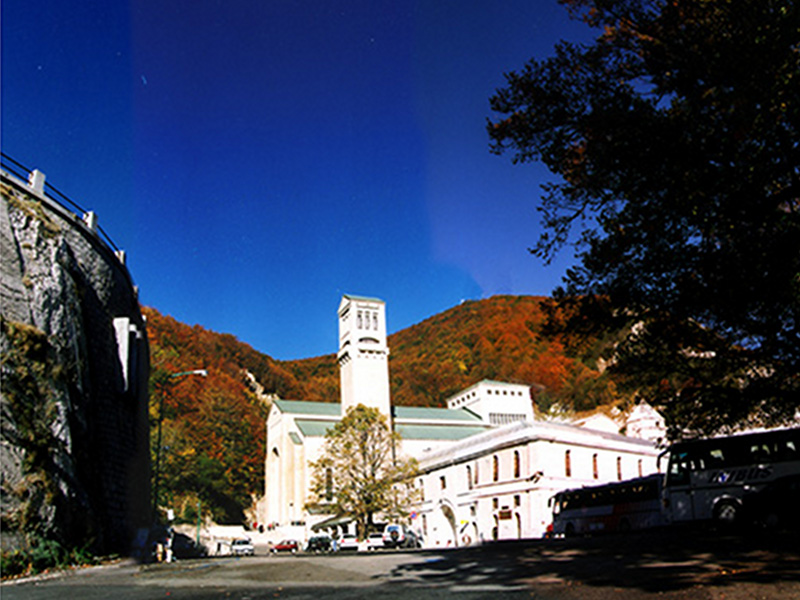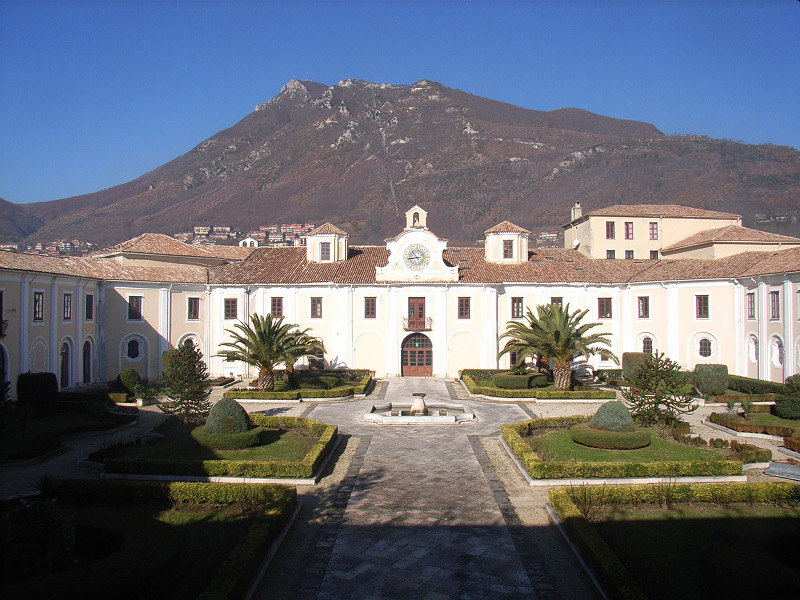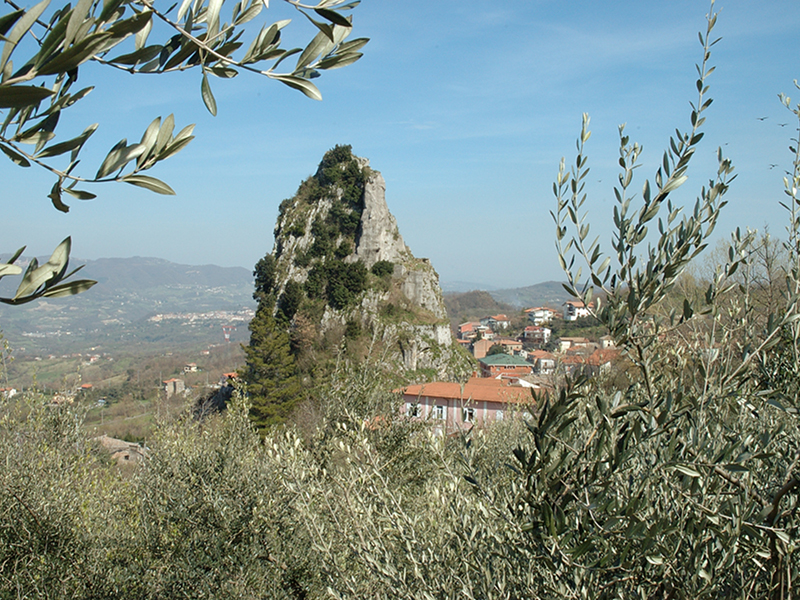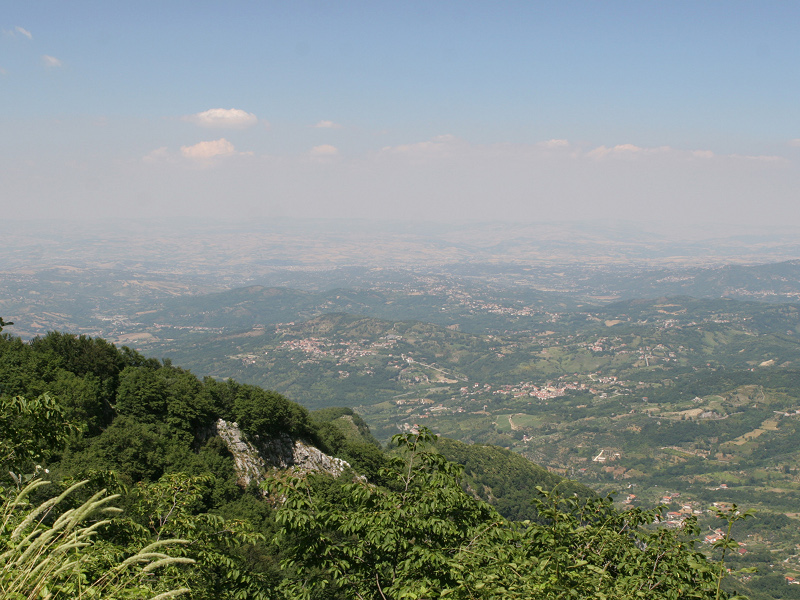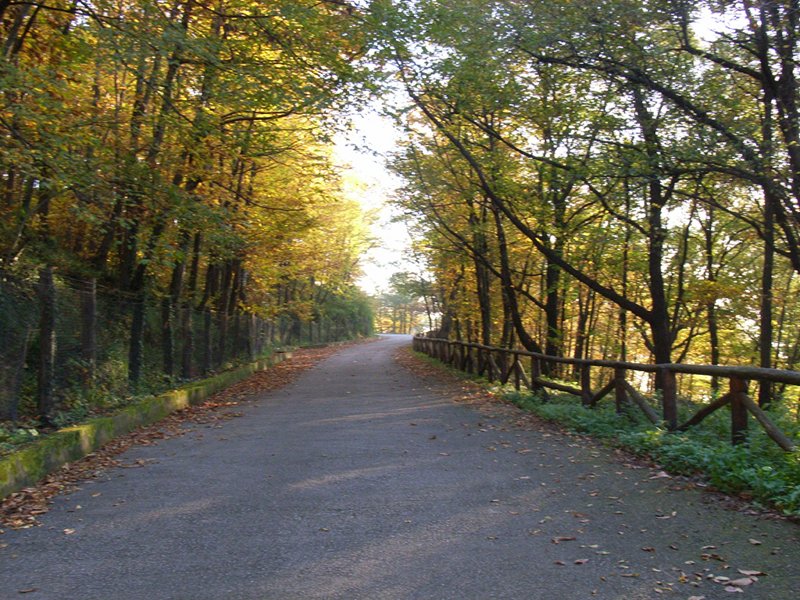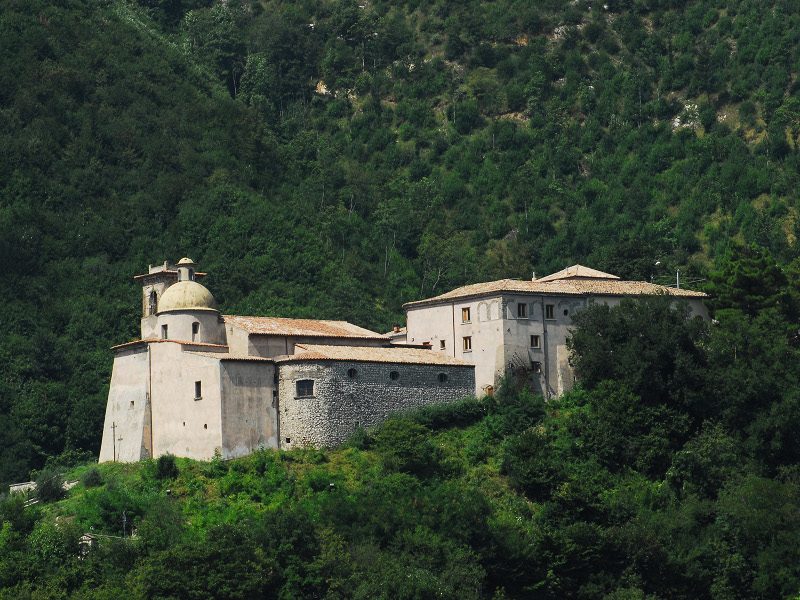Points of Interest
Natural and Historical-Cultural Places
1 - Montevergine Sanctuary
Mercogliano
Dedicated to the Black Madonna (the so-called Mamma Schiavona), is situated on Mt. Partenio, at 1,270m asl, and is also connected through a cable car. The Sanctuary preserves a wonderful museum including archaeological finds and a permanent exhibit of Christmas Cribs coming from all over the world. The 13th century image of the Madonna by the painter Pietro Cavallini is worshipped here. The monumental organ built is 1896 is of great value.
2- Loreto Abbey Palace
Mercogliano
Surrounded by a large courtyard and a very well-kept garden, the palace is the winter residence of Montevergine Abbot. The structure, rebuilt in 1735 according to an architectural drawing by Vaccaro - Vanvitelli's follower - preserves 16th century Flemish tapestries, a pharmacy with a collection of over three hundred majolica vases, a library with an important archive with over seven thousand parchments, as well as imperial and episcopal documents.
3 - Borgo di Capocastello
Mercogliano
Here you can admire the recently renovated ruins of the charming medieval castle, destroyed by a fire in 1656. At the entrance of the village you can see a stretch of the ancient walls surrounding it in the past: Porta dei Santi, on the top of which you can admire a fresco representing San Martino, San Fiorentino, and San Flaviano.
4 - Monument to the Pilgrim
Ospedaletto d'Alpinolo
Built according to the drawing by Abbot Vignatelli, it consists of five statues representing pilgrims headed to Montevergine Sanctuary.
5 - Angevin Tower
Summonte
Built on the ruins of the castle between the end of the 13th and the beginning of the 14th century, it has been recently renovated respecting period details, using preexisting materials and building techniques, with the rearrangement of the walls structure and the reconstruction of the wooden floors.
6 - I Ruins of Incoronata
Sant'Angelo a Scala
Founded in the second half of the 17th century on a preexisting chapel built by the hermits Giulio da Nardò and Giovanni Figuera, the Sanctuary was characterized by the fact that the heart of the structure was not the cloister, like for the other religious congregations, but the cells, expression of the strict rules of this order.
7 - The Rocky Pinnacle
Pietrastonina
It houses on its top the ruins of the medieval castle that was originally formed by two buildings, a system of communication trenches formed by steep stairs dug into the rock, and some bastions.
8 - The Castle
Pannarano
Of great historical and artistic value, it was built around 1300 by Guglielmo Della Leonessa. Born as a fortified settlement, it was subsequently transformed into the noble residence of Caracciolo family first and Cocuzza family after. The castle has its private chapel, whose fittings were given to the Blessed Rosary congregation.
9 - WWF Nature Sanctuary Montagna di Sopra
Pannarano
The difference in height characterizing the territory of the Nature Sanctuary, between 800 and 1,598m a.s.l. of Avella Mountains, favors the presence of a great vegetational variety, with Mediterranean flora at lower altitudes and beech tree woodlands at higher altitudes. The geological structure is mainly calcareous. From the water springs - among them the spring of "Acqua delle Vene" - fine water with a low mineral content flows out. The Nature Sanctuary has a mountain hut with accommodation service, several trails to carry out trekking, and an equipped nature trail dedicated to school groups, with an outdoor didactic area.
10 - Pignatelli della Leonessa Castle
San Martino Valle Caudina
Situated in a strategic and panoramic position at 400m of altitude, the castle develops on two levels and preserves wonderful wall paintings. Built during the Lombard period, it was renovated during the Norman-Suevian Age and, despite the many changes it underwent over the centuries, it has maintained part of the original features of the medieval fortress.
11 - The Medieval Castle
Cervinara
Recently renovated, it still preserves the original square plan, some stretches of the walls, and the donjon (the main tower).
It has a great artistic and historical value, since it represents an evidence of the complex feudal institution.
12 - Madonna della Stella Sanctuary
Rotondi
Situated at the foot of Partenio massif, at 2 km from the town center,
it was built in the 17th century. Originally, it was De Rotundis
castle, subsequently given to the Capuchin Friars who transformed it
into a Monastery and lived there until the 19th century. The church,
although small, is very quiet. The floor is made with a Neapolitan
brickwork.
The altar, in the middle of the dome, houses the throne with the Madonna.
13 - De Mauro Palace
Paolisi
Built in the 17th century, originally used for the rural estates, it became a noble residence. The palace develops along via Roma for a length of about 80 meters. In the inner courtyard, paved with stone and surrounded by a series of arches and picturesque loggias, it is possible to admire a wonderful arch in travertine stone.
14 - San Fortunato Abbey
Arpaia
Situated at the foot of Mt. Castello, it is characterized by a quadrangular-plan belltower. It was entirely built with stone and tufaceous ashlars. The entrance consists of a stone portal.
15 - San Nicola di Myra Church
Forchia
Built in the 17th century, it has a façade enriched by a natural stone portal. At the corners you can notice pilaster strips, while two rectangular windows are situated on the sides of a polychrome majolica panel with the image of the Saint. On the right of the apse there is the belltower, with its archivolt windows, the clock, and the characteristic onion-shape top.
16 - The Castle
Arienzo
Built by the Lombards to defend the Dukedom of Benevento, the castle became baronial feud and passed from one owner to the other. It is still possible to see the imposing ruins of the walls, destroyed more than once.
17 - Sant'Angelo a Palombara Sanctuary
San Felice a Cancello
Situated on a rocky spur on Mt. Sant'Angelo a Palombara, at 600m of altitude. The two-nave church preserves two wooden statues representing St. Michael and Madonna della Libera. In the very narrow cells it is possible to admire the frescos representing Saint Catherine of Alexandria.
18 - Cancello Castle
San Felice a Cancello
Of Lombard origins, it marks the end of "Valle di Suessola". It was used as an encampment and observatory site by the American troops during World War II.
19 - State Regional Forest
Roccarainola
Wonderful mixed forest of oaks, chestnut trees, and beech trees. It houses a regional nursery and recreational areas. It is managed by Regione Campania.
20 - Santa Lucia Church
Roccarainola
Surrounded by the olive trees of the homonymous hill, it dates back to the 16th century. The building has one nave, belltower and façade decorated with majolica panels representing the Madonna, the Child, St. Anthony, Saint Blaise, and St. Mary.
21 - Alvarez de Toledo Duke Palace
Avella
Built by Colonna family in the 16th century, it is enriched by a garden in "vanvitelliano" style housing a centuries-old plane tree.
22 - St Michael the Archangel Cave
Avella
Of karstic origin, it was exploited by the hermit monks as a church and contains frescoes influenced by the Byzantines.
23 - The Castle
Avella
Built during the Lombard rule, it was subsequently rebuilt and strengthened by the Normans, Suevians, Angevins, and Aragonese. With its three walls and the high cylindrical tower, it summarizes the military building techniques in Campania. The strategic position of the defensive fortress gives the opportunity to enjoy a charming panorama.
24 - The Amphitheater
Avella
Built between the 1st and 2nd century AD, it has the same size of Pompei Amphitheater. Situated in loc. S. Pietro, its original structure is well-preserved with the elliptical arena and the opus reticulatum walls.
25 - Funerary Monuments
Avella
Of great importance, the monumental necropolis includes four Roman funerary monuments.
26 - Annunziata Church
Sperone
Built in the 18th century after the creation of via Nazionale delle Puglie, now SS road 7 bis, along which the town developed. The inner nave still preserves the original Baroque altar.
27- Santo Stefano Sanctuary
Baiano
With one nave and two aisles, transept, apse, and belltower. The façade, consistent with the decoration of the interiors, is characterized by a neoclassical style, rich in pilaster strips, Ionic capitals, frames, and indented cornices.
28 - Carovita Palace
Sirignano
Built towards the half of the 19th century on the rests of the ancient feudal castle of the Caracciolo family, it is characterized by three square-plan embattled towers and a luxuriant park with imposing centuries-old trees. The building has an ancient stone portal and a 16th century reservoir.
29 - Baronial Palace
Quadrelle
The baronial palace, built in the 16th century for the noble family of Pagano, probably on the ruins of the ancient medieval castle, was rebuilt in the 18th century. The palace, with a square plan and central courtyard, is formed by over fifty rooms, a roof garden, centuries-old trees, and fountains.
30 - Santa Filomena Sanctuary
Mugnano del Cardinale
Built in 1641 to preserve the relics of the Martyr who lived at the times of the Emperor Diocletian. The wonderful façade has a dome with a small cylindrical tower and is completed by two twin square towers. Beautiful bronze portal.
31 - Lombard Castle
Monteforte Irpino
Built at the top of S. Martino hill, it is surrounded by a fenced-in and equipped area. Of great strategic importance, this fortress was rearranged by Frederick II of Swabia, by the Angevins, and the Aragonese. You can still admire the walls, the circular tower, the main entrance, and an artistic fireplace.



